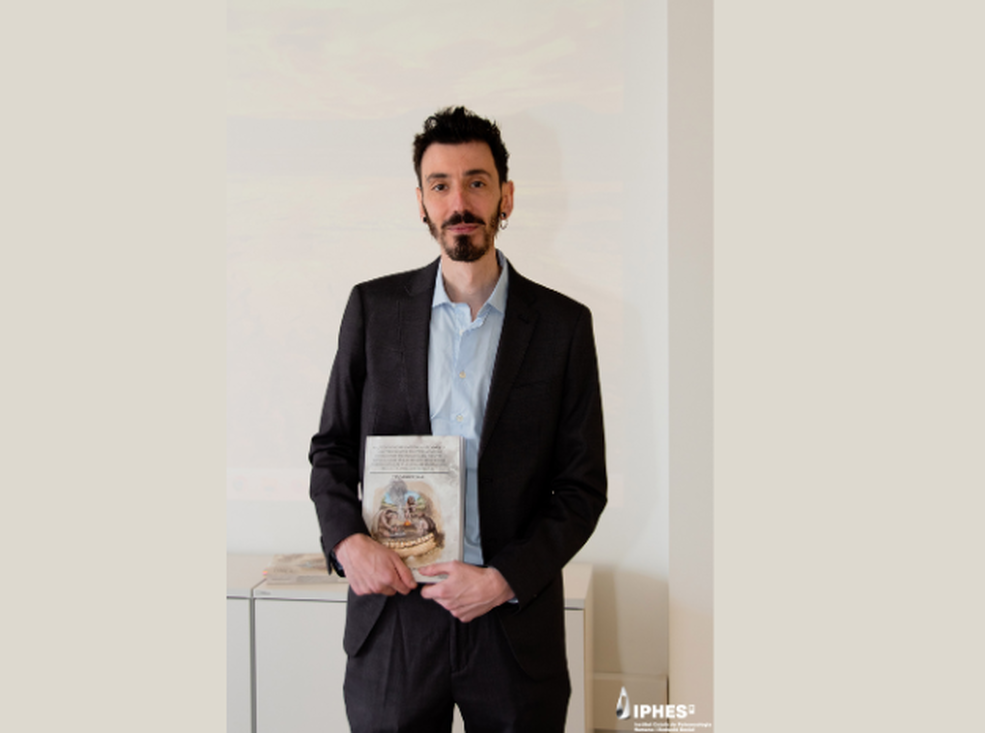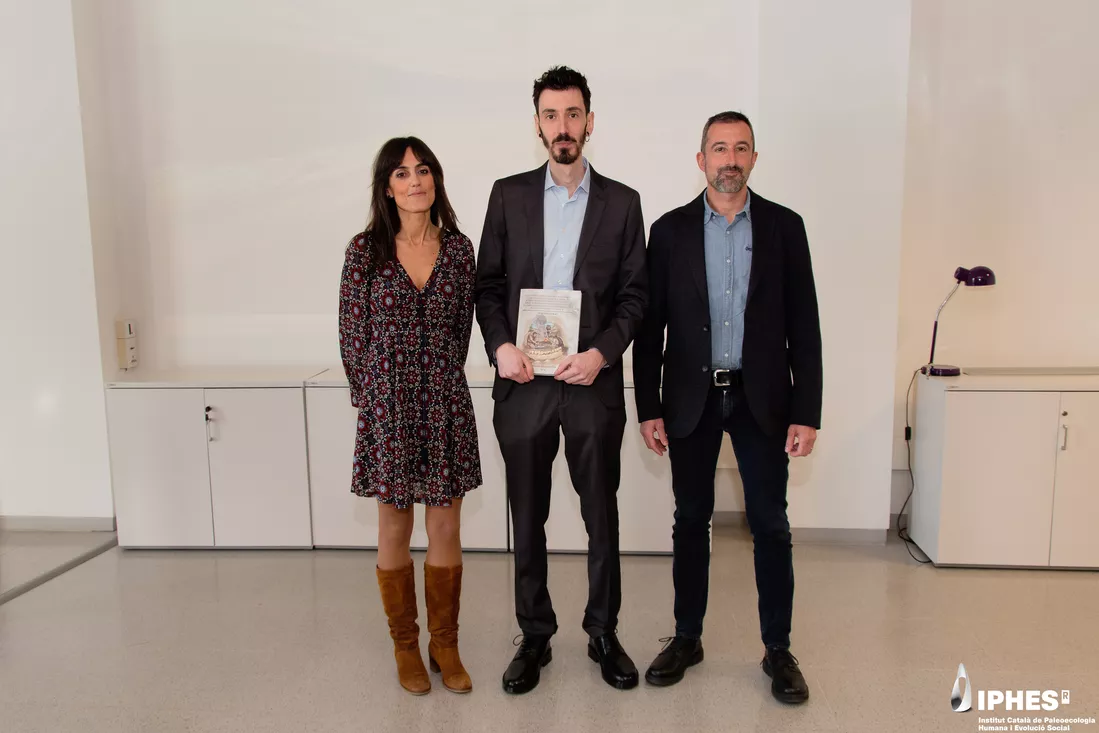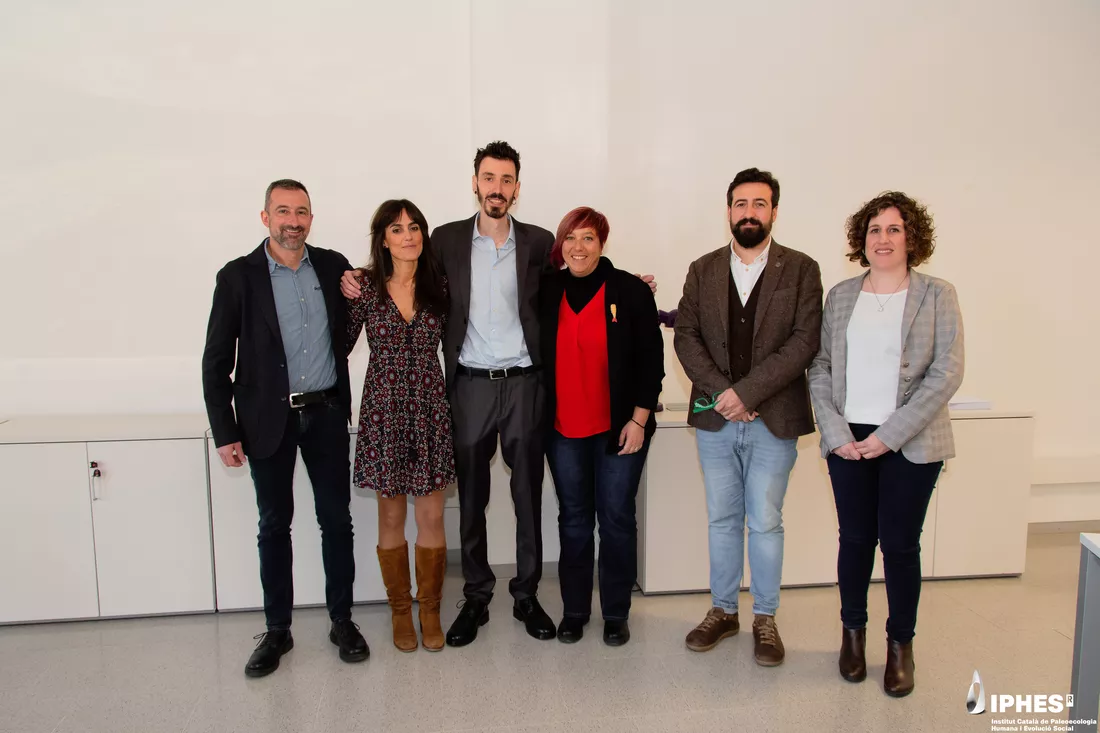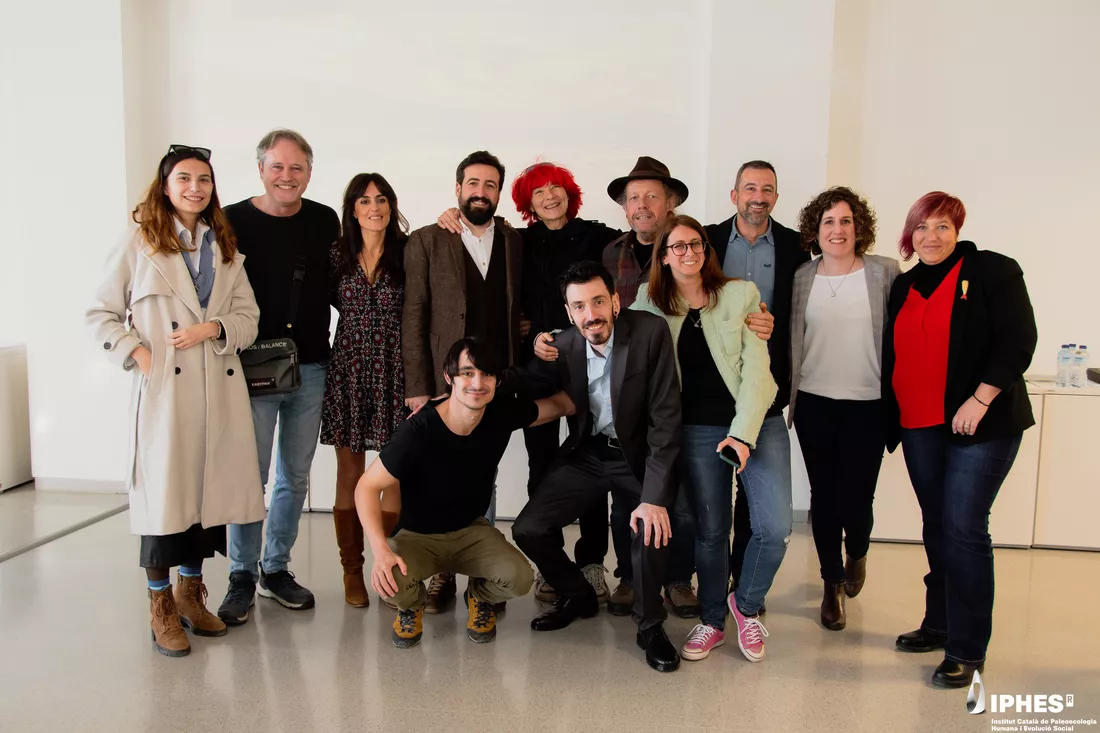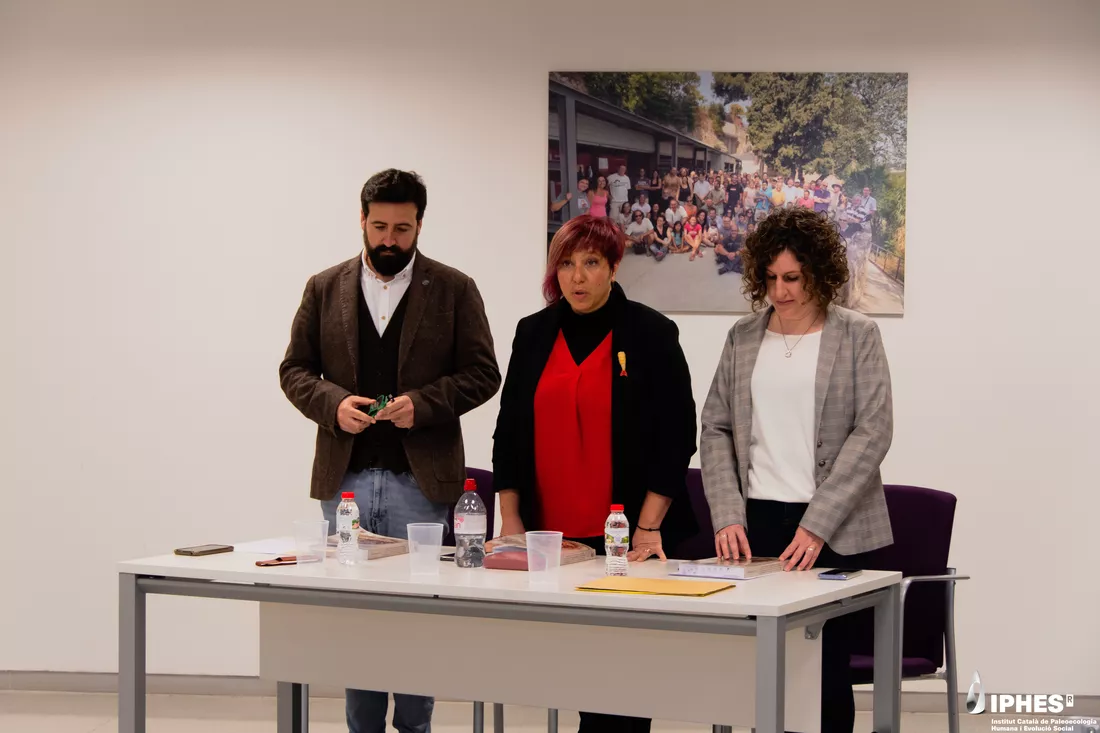Cristian Micó defended her doctoral thesis "Arqueología experimental aplicada a la caracterización e identificación de alteraciones tafonómicas en dientes: implicaciones en las reconstrucciones paleoecológicas y culturales durante el Paleolítico"
This morning, in the Abric Romaní room of the IPHES-CERCA and within the framework of the Doctoral Program in Quaternary and Prehistory of the Rovira i Virgili University, the defense ceremony of the Doctoral Thesis "Applied experimental archeology" was held to the characterization and identification of taphonomic alterations in teeth: implications in paleoecological and cultural reconstructions during the Middle and Upper Paleolithic" carried out by Cristian Micó.
The thesis, directed by Dr. Florent Rivals, ICREA researcher at IPHES-CERCA and by Dra. Ruth Blasco, IPHES-CERCA researcher.
All the IPHES-CERCA team would like to congratulate the new doctor!!!
Summary of the Doctoral Thesis:
Teeth exhibit the highest level of mineralization in the body of most vertebrates, allowing for better preservation than bones in archaeological and paleontological contexts. In turn, their stable chemical structure allows for the implementation of methods and techniques that provide ecological, biological, chronological and cultural information of vital importance for reconstructing the ways of life of past societies.
However, taphonomic analyses and studies on teeth are scarce, despite the presence of modifications commonly present on this type of pieces in the archaeological record. In this scenario, the research developed in this Thesis has as its main objective to understand and characterize the impact of taphonomic processes and agents on teeth in order to: 1) improve the validity of methods based on dental microwear, thus carrying out more precise and reliable dietary reconstructions; 2) identify taphonomic alterations produced by different processes ( trampling , sediment pressure, thermal alteration) and agents (human: traces of use) in the archaeological record, and; 3) provide new perspectives in the discussions on the cultural behaviors of Middle and Upper Paleolithic groups.
Experimental archaeology has been used to simulate processes that occurred in the past and that affected the archaeological record. Current dental samples have been used, and specific methodologies have been established according to the type of taphonomic process simulated. The results obtained from the experiments have been documented, characterized and compared with remains from the following sites: Cova de les Teixoneres and Cova del Toll (Moià, Barcelona, Spain), La Ferrassie (Savignac-de-Miremont, Dordogne, France) and Laugerie-Haute (Les Eyzies-de-Tayac, Dordogne, France).
The taphonomic processes simulated were trampling (Chapter VI), sediment pressure (Chapter VII) and thermal alteration (Chapter VIII). An experimental study was also carried out to evaluate the effectiveness of horse teeth as retouchers (Chapter IX) and then compare the experimental results with the information provided by the archaeological record (Chapter X).
Among the most relevant results, considering a paleoecological approach in the first place, it is worth highlighting the development of a reference framework that allows to accurately differentiate taphonomic alterations from dietary signals. In this context, this research contributes to greater reliability in the interpretation of data and in paleoecological reconstructions.
From a cultural point of view, the use of horse teeth for the production of lithic industry has provided evidence of their effectiveness as retouchers for the manufacture of a wide range of tools.
They are suitable for use with different techniques, such as direct percussion or pressure, as well as for the different gestures of the carvers. Throughout the Middle and Upper Paleolithic, they were used in different ways and with different intensities. It is suggested that special attention be paid during the taphonomic analysis of the teeth in order to better understand their technological purposes, since the work carried out in this Thesis seems to indicate that they were important elements in the operational chain.

